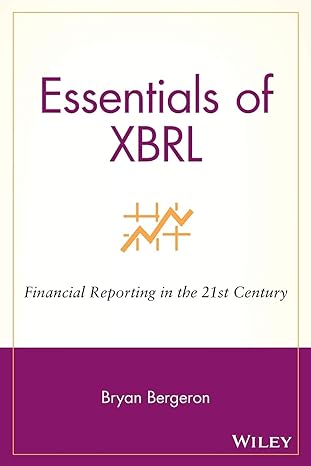Question
A private company in Texas will construct a warehouse facility. It will be a four-hundred-thousand square-foot warehouse. Two project scenarios have been given. For these
A private company in Texas will construct a warehouse facility. It will be a four-hundred-thousand square-foot warehouse. Two project scenarios have been given. For these two scenarios, the Present Worth Analysis must be calculated to determine which of the two is more economical. The more economical and logical scenario shall be chosen for the project. Both scenarios have several expenses including site work, construction, landscape and building maintenance, pavement rehabilitation, and utilities.
Scenario 1
The first scenario has a one-phase construction process that lasts 1 year. The civil engineering design will start right away taking a year to complete. The civil engineer is going to be paid 60% of the total fee when land development approvals are accepted (year 1). The other 40% is going to be paid when the site work is completed (year 2). The architectural engineer will design the building at the same time the site work is being constructed. He will be paid 60% of the total fee when the design is completed (year 2) and the other 40% when the construction is completed (year 3).
ASSUMPTIONS
Making a few general assumptions helped to make the calculations and decisions easier and consistent.
- There will not be trouble finding a tenant as soon as leasing is offered. This eliminates the possibility of not filling the warehouse due to lack of rental interest.
- All necessary tools and furniture for the space was previously purchased and therefore not included in the calculations.
- When discussing financing, the interest rate was based on an educated assumption. The assumption was made for a 3% annual rate.
- The assumption was made that there will be 60 employers working in the facility. This assumption was required for the costs of sewer and water that must be considered.
INCOME/EXPENSES
Scenario 1:
Expenses:
- The Civil Engineer gets a $105,000 fee. (60% on year 1) and (40% on year 2).
- The site work costs $800,000, to be paid on year 2.
- The Architectural Engineer gets a $2,000,000 for the design. (60% on year 2) and (40% on year 3)
- The additional 2500 squared-foot office construction costs $200,000, to be paid on year 3.
- The building construction costs $49,000,000 to be paid on year 3.
- The retrofit for the building costs $600,000 to be paid on year 9.
- The pavement rehabilitation costs $180,000 to be paid on years 9, 14,19.
- The advertisement for leasing costs $1,500 annually on years 2, 3, and 4.
- The landscape maintenance costs $3000 annually between the years 3 thru 20.
- The snow removal costs $1,200 annually between the years 3 thru 20.
- The insurance costs $10,000 annually between the years 3 thru 20.
- The general building maintenance costs $1,000,000 annually between the years 3 thru 20.
- The electricity costs $450,000 annually between the years 3 thru 20.
- The sewer costs $2,500 annually between the years 3 thru 20.
- The water costs $1,000 annually between the years 3 thru 20.
- The fire suppression costs $600 annually between the years 3 thru 20.
- The loan payment is $2,300,000 annually between the years 1 thru 20.
Income:
- The loan income is a total of $40,500,000 on year 1.
- The lease income is $3,000,000 annually between the years 4 thru 9.
- The rental income on the other side during the lease is $2,400,000 annually between the years 4 thru 9.
- The rental income is $4,700,000 annually between the years 10 thru 20.
Step by Step Solution
There are 3 Steps involved in it
Step: 1

Get Instant Access to Expert-Tailored Solutions
See step-by-step solutions with expert insights and AI powered tools for academic success
Step: 2

Step: 3

Ace Your Homework with AI
Get the answers you need in no time with our AI-driven, step-by-step assistance
Get Started


